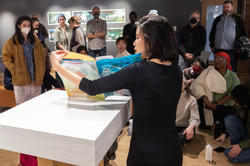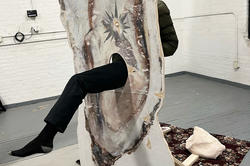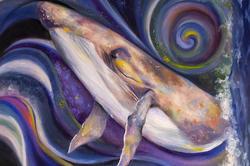The Illustration department’s new graduate program aims to transform the field by inspiring self-authorship and social engagement.
RISD Studio Encourages Students to Explore Socially Engaged Art Practices
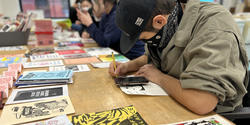
What does it mean to have a “socially engaged” art practice? And what is an artist’s responsibility to create socially engaged work? Students sought answers to such questions in Complicating Social Practice, a Wintersession studio co-taught by Sculpture grad students Nahyun Kim MFA 23 SC and Lara Kim MFA 23 SC.
“We wanted to . . . expose the students to a wide range of social practices, within, outside and tangential to the art world.”
“Nahyun and I designed Complicating Social Practice to be the ‘course we never had’ in our own undergraduate experiences,” says Lara Kim. “We wanted to step away from trying to establish any sort of canon of socially engaged art and expose the students to a wide range of social practices, both within, outside and tangential to the art world.”
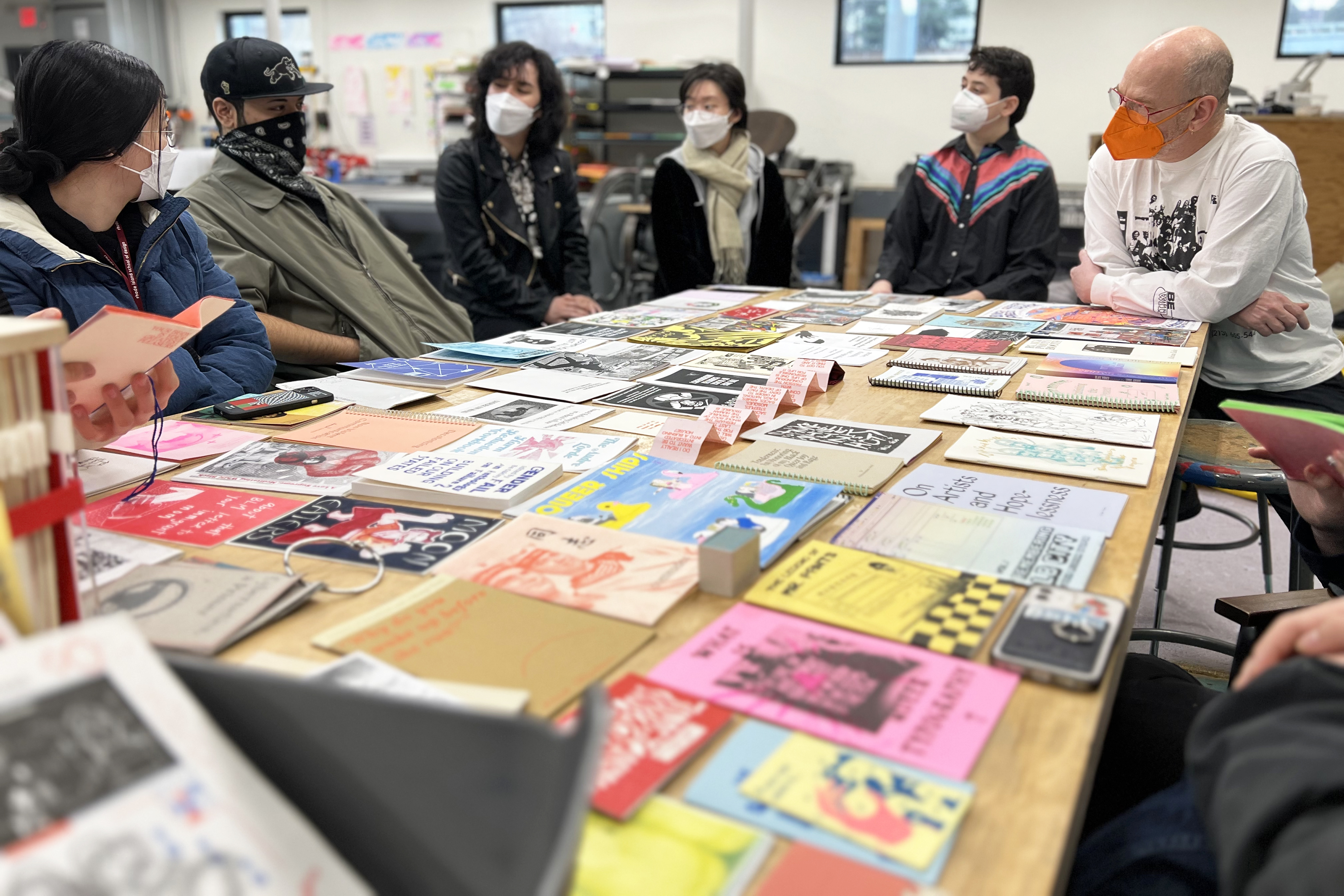
Throughout the term, students engaged in research, fieldwork and collaborations intended to help them develop the critical capacities they’ll need in order to integrate compassionate, socially engaged methodologies into their own practices. “The term social practice has become a buzzword for this generation of artists,” says grad student and studio co-lead Nahyun Kim, “and one that has developed a bad reputation because so many people who claim to be social practitioners take advantage of the communities they’re supposed to be supporting.”
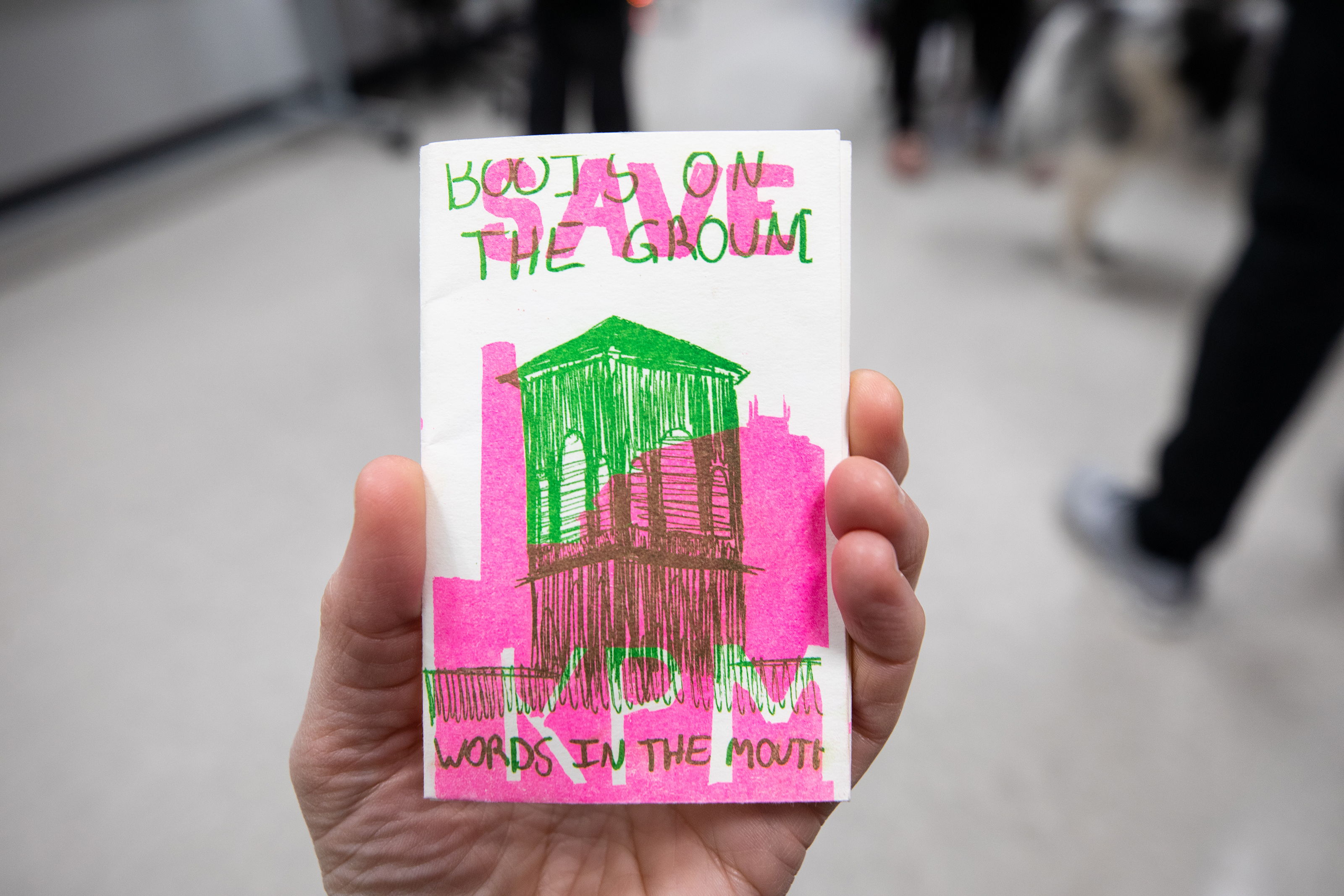
Students first visited the Fleet Library at RISD’s Special Collections to learn about how artists have historically engaged in social practice. Visiting artist and RISD alum Maia Chao MFA 17 GL spoke to the class about Look at Art, Get Paid, a 2016 program through which Chao and their collaborator Josephine Devanbu BRDD 16 PT attempted to bring more diverse audiences into the RISD Museum.
“Hearing Maia Chao speak provided a rare example of somebody who has harnessed resources and directed them to a better use,” says Isaiah “Prophet” Raines 25 SC, who enrolled in the class. “The mutual transaction philosophy showed through well.”
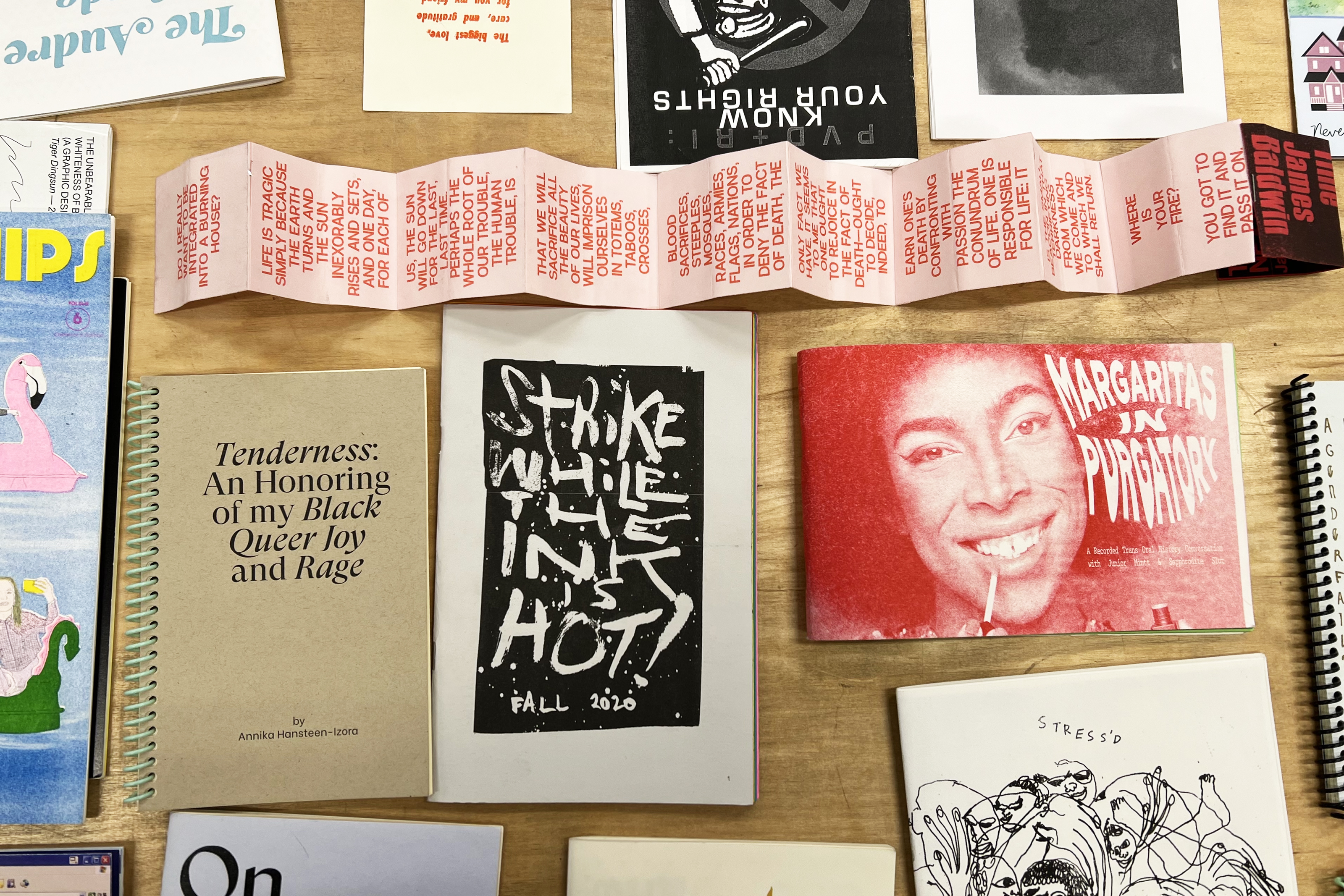
Students also visited Binch Press/Queer.Archive.Work, a volunteer-run print cooperative that centers queer and trans artists, and met with Graphic Design Department Head Paul Soulellis, who is a member of the studio. He described the library as “very alive” and added that “it considers the past, is grounded in the present and looks to the future.” At the end of the visit, Queer.Archive.Work member Jules Zuckerberg led a workshop on risograph printing, and students collaborated on a small booklet of their illustrations.
“If we as artists have the demonstrated ability to destroy communities through ‘urban beautification’ and ‘creative placemaking,’ we have just as much ability to build and preserve them.”
Raines was inspired by the work on view. “We must reconcile the impact we have on the environments we work in,” he says. “If we as artists have the demonstrated ability to destroy communities through ‘urban beautification’ and ‘creative placemaking,’ we have just as much ability to build and preserve them.”
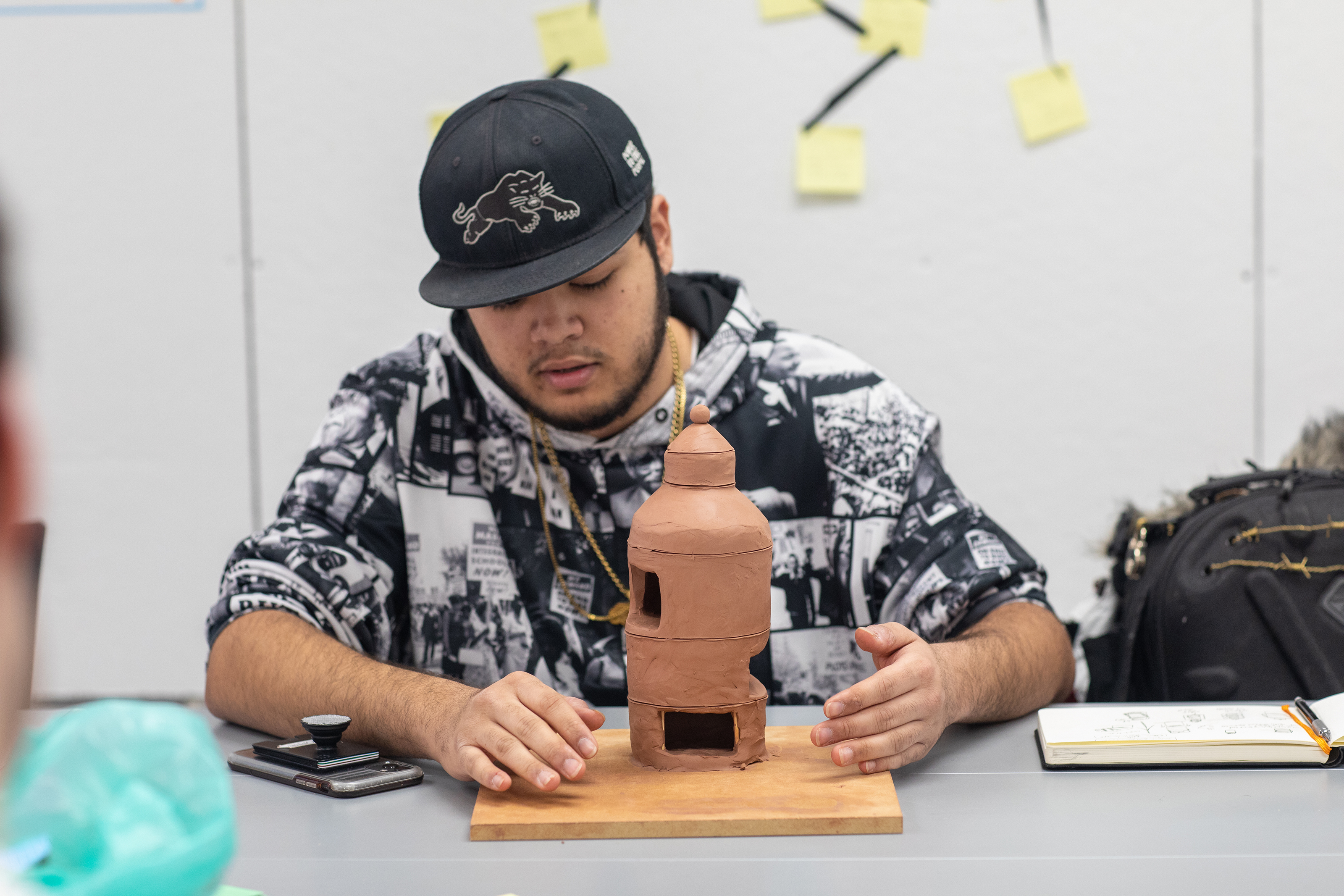
For his final project, Raines presented a small sculpted model of his concept Community Dinner Pail, a storage container to be placed at the head of a hiking trail in Fall River, MA (once known as “the city of the dinner pail”) to offer food and clothing to locals in need. “This would be a small solution to the food insecurity issue many Southside Fall River residents face,” he said.
“I appreciate that you have skin in the game,” Lara Kim commented. “You’re not playing the role of social practitioner as savior.”
In the darkened room next door, Henry Ding BArch 26 invited students to observe and interact with his collaborative installation on sanctuary and migration without providing any background information. Unrecognizable black and white figures reflected on the wall created an antiquated aura, which reminded one student of a post-World War II documentary. A muffled audio track played airline safety instructions in English and Serbian.
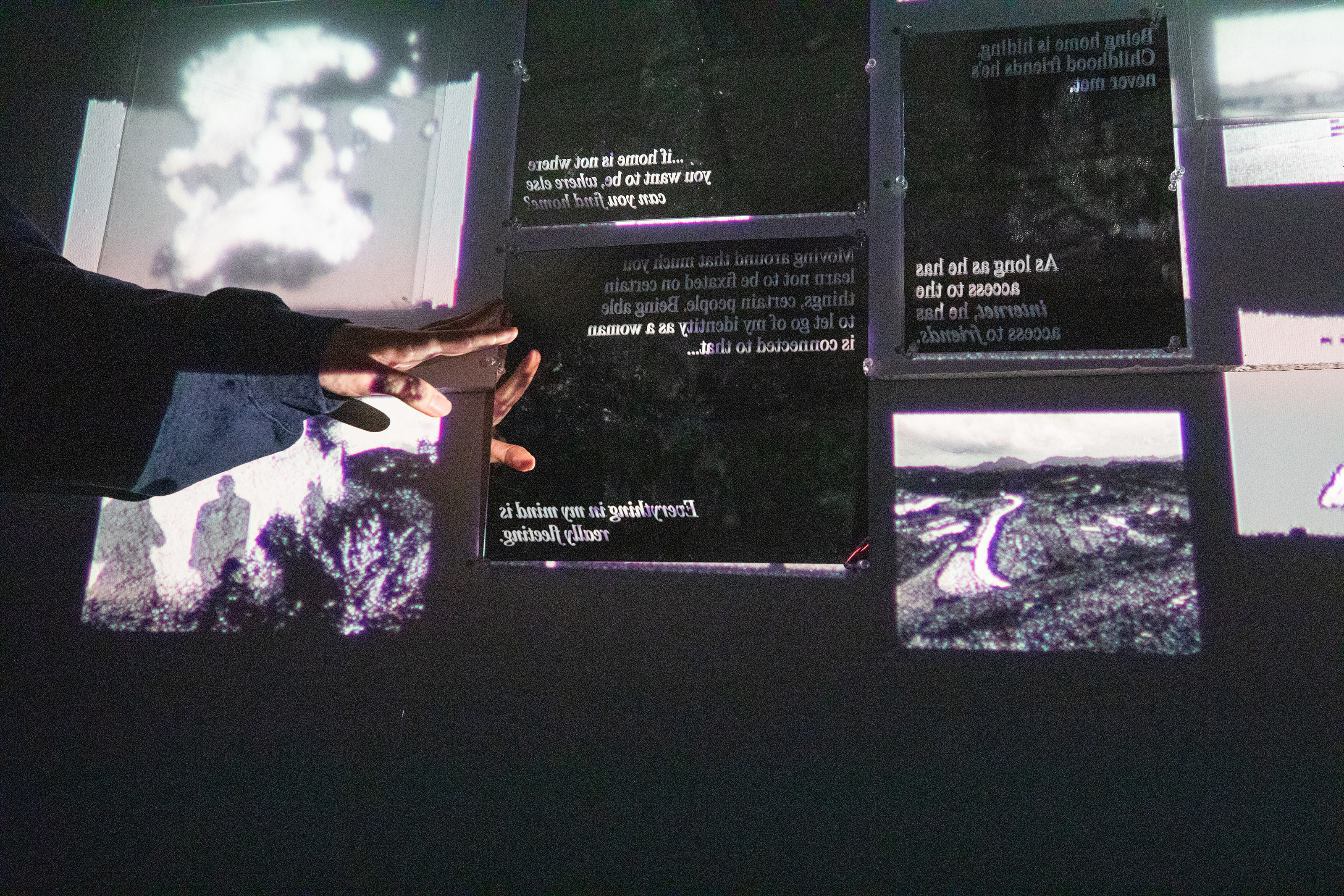
“The audio is intended to reflect the experience of waking up groggy and disoriented on an international flight,” Ding explained. “The project is based on themes of home, migration and forced displacement among queer people.”
Ding and his collaborator Ryan Yan 25 GD interviewed queer individuals about their identities and experiences of sanctuary and migration, transformed pixelated images of their faces into 3D scans and then projected them onto mirrors that created the eerie reflections. “There are so many different types of reality being embodied at the same time in this piece,” said Lara Kim. “It speaks to queer identity in a very profound way.”
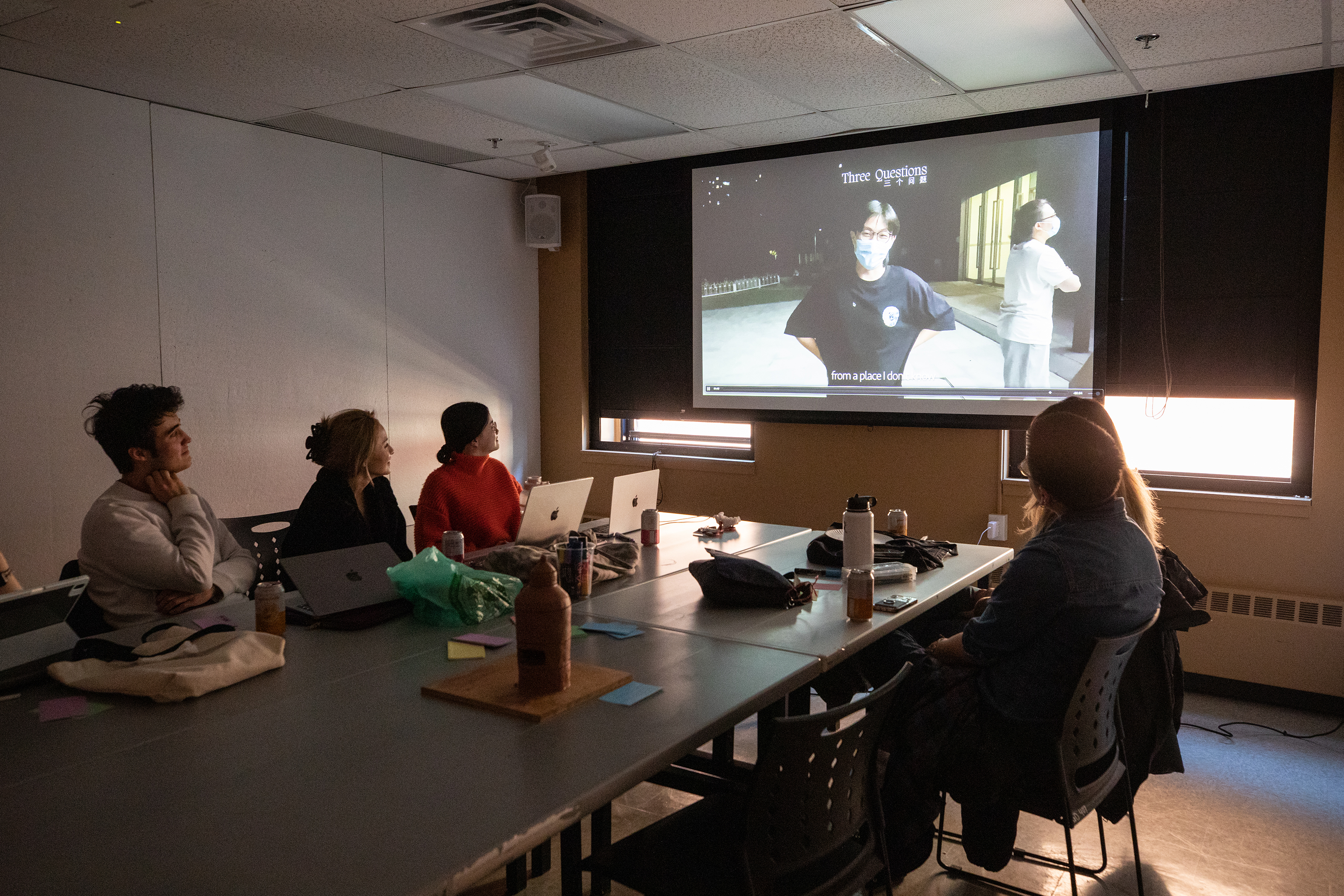
Jodi Tang 23 GD and Roy Larmour 26 EFS played off of Chao’s work on diversifying museum audiences with a video docuseries called From China to the US. “Many people think museums are irrelevant to them and are afraid to step inside,” Tang explained. “We wanted to create something that would help visitors feel like a part of the exhibition.” The video features short clips of children and adults answering three simple questions: Who are you? Where did you come from? Where are you going?
“I’m excited to bring these things to my home community and build spaces for queer worldmaking and joy.”
“Being able to teach while simultaneously being a student gave me a different perspective on the pressures and challenges RISD students are grappling with,” says Lara Kim, “and how we might challenge classroom power structures while co-creating a small, ephemeral creative community of our own within the span of five weeks. I'm excited to bring these things to my home community and build spaces for queer worldmaking and joy.”
—Isabel Roberts / photos by Jo Sittenfeld and Isabel Roberts
February 23, 2023
